8 BITS WITH SOUL OF 16
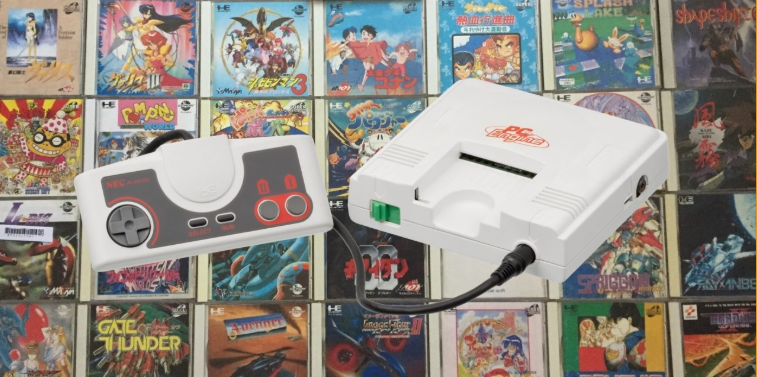
Konami and M2 have made the arrival of PC Engine Mini possible. This mini console with more than 50 games recovers one of the most unknown consoles in the West and which started the so-called fourth generation of video game consoles. It is a good time to dive on this amazing console.

His story
PC Engine is a cartridge based video game console manufactured and marketed by NEC Home Electronics, and designed by Hudson Soft. It was released in Japan on October 30, 1987 and in the United States on August 29, 1989. It also had a limited release in the UK and Spain simply as TurboGrafx and based on the American model. The original Japanese model was distributed in France.
It was the first console released in the 16-bit era, although it used an 8-bit CPU. Originally it was meant to compete with Famicom, but ended up competing with Mega Drive and Super Famicom
It has an 8-bit CPU, a 16-bit video color encoder, and a 16-bit video display driver. It displays 482 colors simultaneously, out of 512. The games are stored in a cartridge called HuCard, or in optical CD-ROM format with the corresponding plug-in. At 14x14x3.8 cm it is the smallest desktop console. TurboGrafx-16 was unsuccessful when landing in North America. When the European launch was ready with the packs ready, NEC decided to liquidate the console outside of Japan. There was no official launch.
However, in Japan, PC Engine was successful and got some third-party support. In his debut he sold more than Famicom, beat Mega Drive, and eventually became Super Famicom's main rival. More than 15 revisions were made and it was the first console to have a CD-ROM expansion. There was an improved model, PC Engine SuperGrafx, intended to replace the standard PCEngine, but it was quickly discontinued.
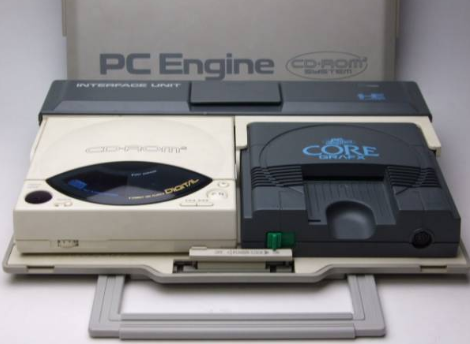
This console was a collaborative effort between Hudson Soft, which created the software, and NEC, a major company that was dominant in the Japanese personal computer market with its PC-88 and PC-98 platforms. NEC's interest in entering the lucrative video game market coincided with Hudson's failed attempt to sell advanced graphics chip designs for Nintendo.
NEC is a powerful Japanese technology company. He lacked life experience in the video game industry, so he applied to numerous video game studios for support. They eventually discovered that, coincidentally, Hudson Soft was also interested in creating their own system, but needed a partner to raise additional cash. The two companies successfully joined forces to later develop the new system. NEC's investment in R & D & I for this console surpassed that of Mega Drive and Super Famicom combined.
PC Engine finally made its Japanese market debut on October 30, 1987, and it was a huge success. In 1988 it outperformed Famicom annually, putting NEC and Hudson Soft ahead of Nintendo in the market, and well ahead of Sega. A strong line of software and strong third-party support from high-profile developers like Namco and Konami gave NEC leadership in the Japanese market until the arrival of Super Famicom.
In 1988, NEC wanted to sell the console to the American market and ordered its American distributors to do so. They modified the name and design to adapt it more to the taste of the public on the other side of the Pacific.
As a result, they came up with the name ‘TurboGrafx-16 ′, a name that stands for its graphics speed and strength, and its 16-bit GPU. They also completely redesigned the hardware in a large, black case. This delayed the debut of the system in the US market.
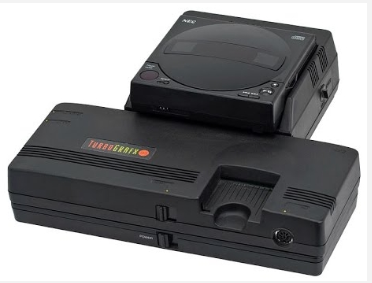
TurboGrafx-16 was finally released in 1989. Sega wasted no time redesigning the original Japanese Mega Drive model and was able to launch it two weeks before the NEC console. The launch of Genesis was accompanied by an advertising campaign that focused on the 16-bit cpu. Sega's machine quickly eclipsed TurboGrafx-16 after its U.S. debut.
Sega presented his Genesis with Altered Beast, a well-known arcade in the USA. NEC released the console with the game Keith Courage in Alpha Zones, totally unknown to western players. In 1990 it was clear that the system was malfunctioning and was severely outmatched by Sega marketing
NEC had prepared the launch in Europe with a model similar to the American called only Turbografx. Launch packs were ready and some European retailers had been distributed. In Spain, El Corte Inglés received some units. Finally, the official launch was canceled and an order was given to liquidate what was distributed. The console does not have a regional lock. European models simply run American or Japanese HuCards at 50hz.
A particular case is French. The PC Engine consoles, as well as some of their accessories, were imported from Japan by the French importer Guillemot - a forerunner of Ubisoft - from November 1989 to 1993. This came after considerable enthusiasm in the French press. The PCEngine model was distributed in France and Benelux. It came with instructions in French and also an AV cable to allow entry into a SECAM television. It is the only area outside of Japan where the console had some success.
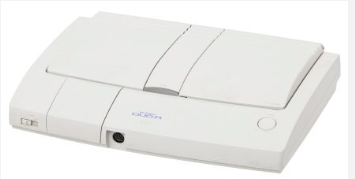
In 1991 NEC released PC Engine Duo in Japan, a model that could play HuCards and CD-ROMs, becoming the first game console with a built-in CD-ROM drive.
The console was released in North America in 1992 as TurboDuo. In addition to standard CD-ROM format discs, the Duo could also play games in the recently introduced Super CD-ROM format due to its larger RAM size. The unit competed directly with Sega CD. Turbo Technologies ran comic book ads with Johnny Turbo. But until the arrival of PlayStation, no CD-ROM-based console had the expected success.
The TurboGrafx series was the first video game console to have a fully autonomous, contemporary portable version, the PC Engine GT, known as TurboExpress in North America. It contained identical hardware and the same HuCards as the desktop. It failed due to its high price, its huge battery consumption and because some games designed for a TV screen did not look good on a screen less than three inches.
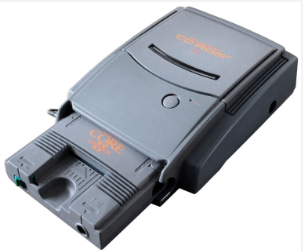

EXPANSIONS
TURBOGRAFX-CD / CD-ROM
It is an additional accessory for the PC Engine that was released in Japan on December 4, 1988. This made the PC Engine the first video game console to use CD-ROM as a storage medium. The plug-in consisted of two devices: the CD player itself and the interface unit, which connects the CD player to the console and provides a unified power supply and output for both.
It was later released as a TurboGrafx-CD in the United States in November 1989, with a reworked interface unit to accommodate the different shapes of the TurboGrafx-16 console. Turbografx-CD had a launch price of $ 399 and had no games included. Both normal games with add-ons and exclusive games were released.
SUPER CD-ROM
In 1991, NEC introduced an improved version of the CD-ROM system known as the Super CD-ROM, which updates the BIOS and increases RAM. This expansion was launched in several ways: the first was PC Engine Duo, a new console model with a CD-ROM drive and with updated BIOS and RAM already built into the system.
This was followed by the Super System Card, an update for the CD-ROM plug-in that serves as a replacement for the original System Card. PC Engine owners who did not yet own the original CD-ROM could opt for the Super-CD-ROM drive, which combines the CD-ROM drive, interface, and Super System card into one device.
ARCADE CARD
NEC introduced a third update known as the Arcade Card, which increases the amount of built-in RAM in the Super CD-ROM system. This update was released in two models: the Arcade Card Duo, designed for PC Engine consoles already equipped with the Super CD-ROM system, and the Arcade Card Pro, a model for the original CD-ROM system that combines the functionality of the Super System Card and Arcade Card Duo in one.
At this point, support for both the TurboGrafx-16 and Turbo Duo was already declining in North America, and therefore no North American version of either Arcade Card was produced, although a Japanese Arcade Card can be used. on a North American console via a HuCard switch.
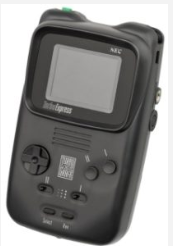
AUTONOMOUS VARIATIONS
PC ENGINE COREGRAFX
It is an updated 1989 PC Engine model. It is the same shape and size as the original PC Engine, but changes the color scheme from white and red to black and blue, and has A/V output.
It also used a revised CPU, which fixed some audio issues. In 1991 he released a re-engineered version, known as the PC Engine CoreGrafx II. In addition to the different colors it is almost identical to the original CoreGrafx, except for the CPU that was the original.
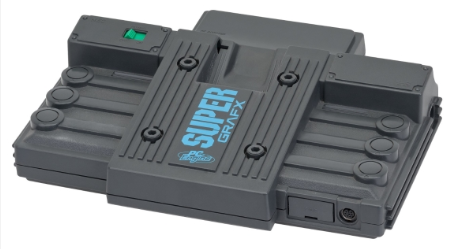
PCEngine shared its catalog with consoles of the time such as Famicom, Mega Drive, Mega CD and Super Famicom. They emphasize the versions, of R-Type, Salamander, Snatcher, and Splatterhouse. But in this article I will focus on the most exclusive of their catalog. I add information about its format and compatibility with the various add-ons that this console had. PCE games for the basic console, CD for the CD-ROM and SG for Super Grafx.
Bonk’s Adventure is a prehistoric platform game in which you are in control of a bald and big headed caveman, guiding him through the levels eliminating all kinds of strange prehistoric creatures that stand in your way. The game is no different than other platform games of the time but has unique elements. You can climb walls and swing and the method of attack is to hit enemies with the head.
It is a 2D side-scrolling shooter game set in the Bonk franchise. While Air Zonk differed from its successor in terms of gameplay, the Bonk series' cartoon style could still be seen throughout the game, especially in the graphics, characters, and, of course, Zonk himself. Extended weapons and powerful explosions are now represented by killer decks of cards and giant metal jaws. Big, towering endbosses are still the norm, but here your enemies range from giant piles of living garbage to murderous soccer players.
This game makes you fight monsters through seven stages with just one sword, but three other weapons can be collected along the way and include axes, chain lances, and smart bombs. These weapons can only be obtained by collecting the power left by a defeated enemy. Weapons can be changed along the way. At the end of each level, you must defeat a big boss to go to the next stage.

All PC Engine systems and variations are compatible with the same game controllers. including pads, joysticks and multitaps. All PC Engine drives shared the same expansion connector, allowing devices such as CD-ROM drive, save battery, and AV output to be used. TurboGrafx units use a different controller port, but adapters are available and the protocol is the same.
Congratulations @thranax! You have completed the following achievement on the Hive blockchain and have been rewarded with new badge(s) :
You can view your badges on your board and compare to others on the Ranking
If you no longer want to receive notifications, reply to this comment with the word
STOPDo not miss the last post from @hivebuzz:
Support the HiveBuzz project. Vote for our proposal!
Yay!
Your post has been boosted with ESTM. Keep up the good work!
Dear reader, Install Android: https://android.esteem.app, iOS: https://ios.esteem.app mobile app or desktop app for Windows, Mac, Linux: https://desktop.esteem.app
Learn more: https://esteem.app
Join our discord: https://discord.me/esteem